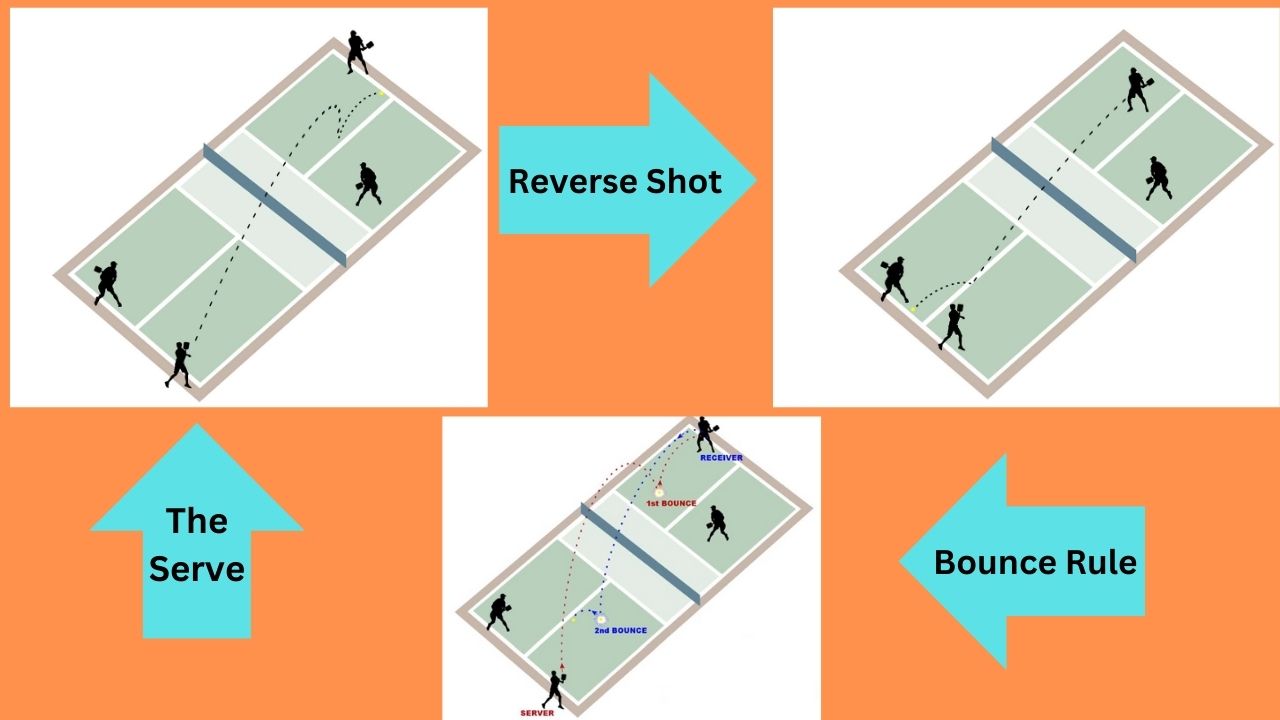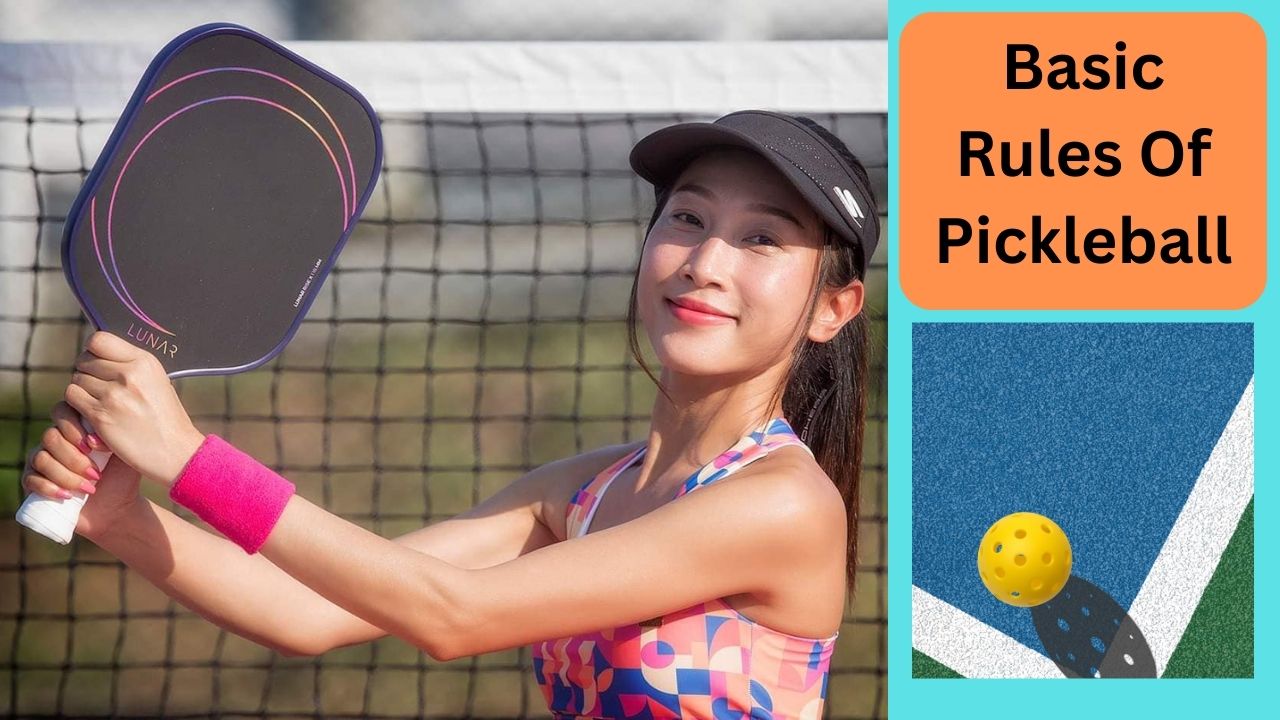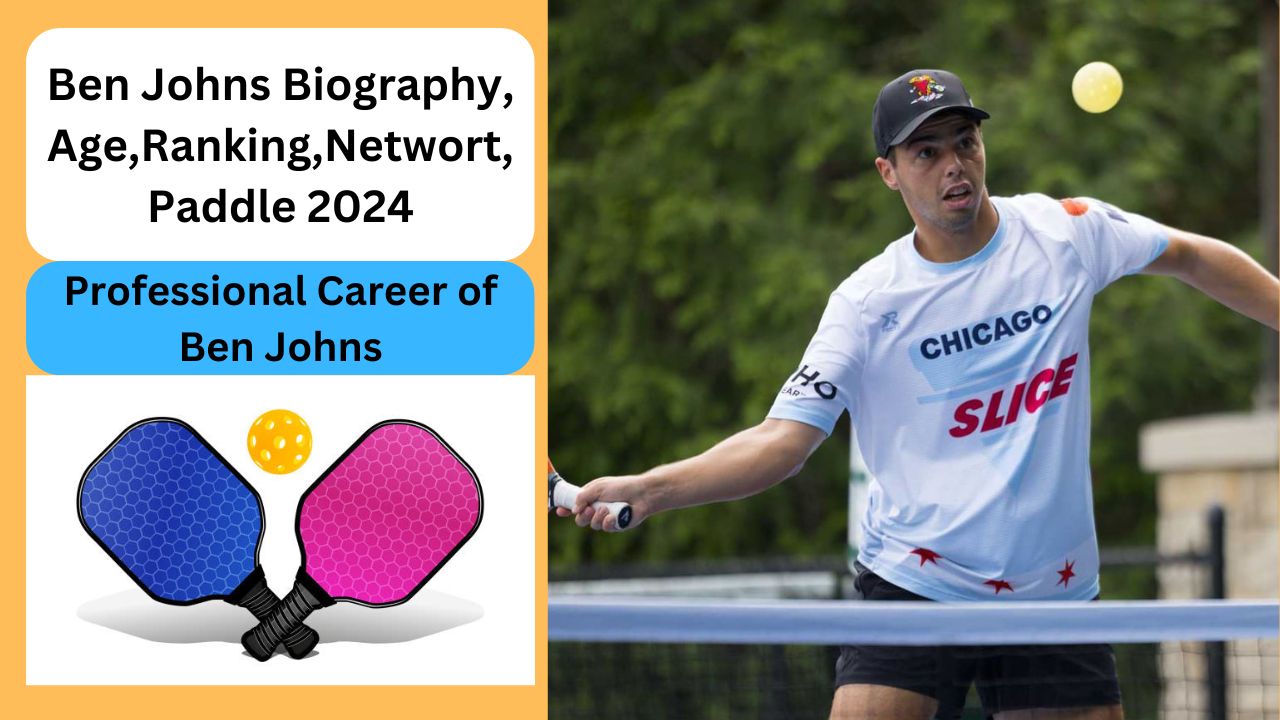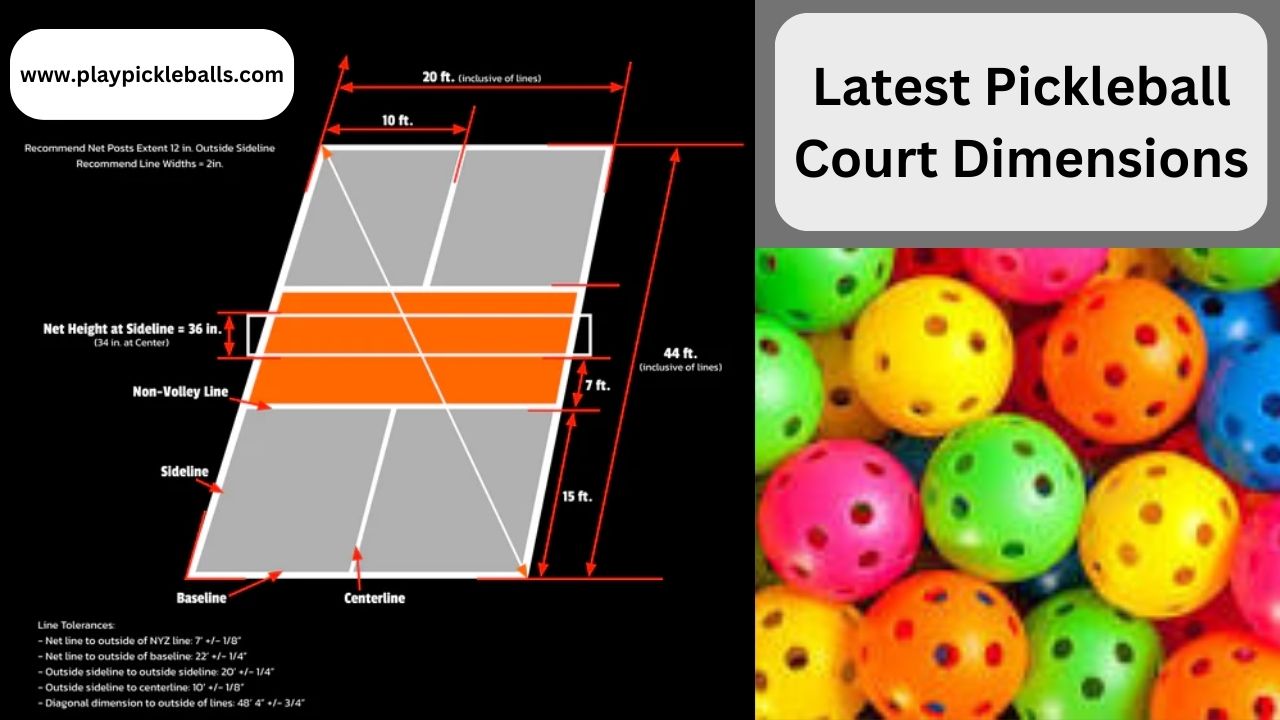Basic Rules Of Pickleball Sport : Friends, I want to make it clear to you here that the rules given in this article have been taken from various websites of America. Here we are summarizing the rules of pickleball sport. If there is any conflict between these Rules and the Official Rules, the Official Rules will prevail.
Besic Rules Of Pickleball
All know that Pickleball sport is played either as doubles (two players per team) or singles. In Tournaments doubles is most common . There is same size playing area and rules are used for both singles and doubles .
The Serve of Pickleball
- In the Pickleball match The server’s arm must be moving in an upward arc when the ball is struck.
- Important thing is that the Paddle contact with the ball must not be made above the waist level.
- The head of the paddle must not be above the highest part of the wrist at contact.
- A ‘drop serve’ is also permitted in which case none of the elements above apply.
- Like smashing Volleyball server , At the time the ball is struck, the server’s feet may not touch the court or outside the imaginary extension of the sideline or centerline and at least one foot must be behind the baseline on the playing surface or the ground behind the baseline.
- One more important rule is that the serve is made diagonally crosscourt and must land within the confines of the opposite diagonal court.
- Only one serve attempt is allowed per server.
Serving Sequence
- Both players on the serving doubles team have the opportunity to serve and score points until they commit a fault (except for the first service sequence of each new game).
- The first serve of each side-out is made from the right/even court.
- If a point is scored, the server switches sides, and the server initiates the next serve from the left/odd court.
- As subsequent points are scored, the server continues switching back and forth until a fault is committed, and the first server loses the serve.
- When the first server loses the serve, the partner then serves from their correct side of the court (except for the first service sequence of the game*).
- The second server continues serving until his team commits a fault and loses the serve to the opposing team.
- Once the service goes to the opposition (at side out), the first serve is from the right/even court, and both players on that team have the opportunity to serve and score points until their team commits two faults.
- In singles, the server serves from the right/even court when his or her score is even and from the left/odd when the score is odd.
At the beginning of each new game only one partner on the serving team has the opportunity to serve before faulting, after which the service passes to the receiving team.
Scoring of Pickleball
- Only the serving team can score points.
- Regular games are typically played to 11 points, with a win by a margin of 2 points.
- Tournament games may extend to 15 or 21 points, with a win by a margin of 2 points.
- When the serving team’s score is even (0, 2, 4, 6, 8, 10), the player who served first for that team will occupy the right/even court for serving or receiving. When the score is odd (1, 3, 5, 7, 9), that player will be positioned in the left/odd court for serving or receiving.
Two-Bounce Rule
- Upon serving, the receiving team must allow the ball to bounce before returning it, and then the serving team must also let it bounce before returning, resulting in two bounces.
- Once the ball has bounced once in each team’s court, both teams have the option to either volley the ball (hitting it before it bounces) or play it off a bounce (ground stroke).
- The implementation of the two-bounce rule serves to negate the serve and volley advantage and prolong rallies.

Line Calls
- A ball contacting any part of any line, except the non-volley zone line on a serve, is considered “in.”
- A serve contacting the non-volley zone line is short and a fault.
Non-Volley Zone
- The non-volley zone encompasses the court area within 7 feet on both sides of the net.
- Within the non-volley zone, players are prohibited from volleying the ball, preventing them from executing smashes from this particular area.
- It constitutes a fault if a player, while volleying, steps on the non-volley zone, including its lines, or if their momentum carries them or anything they’re wearing or carrying into the non-volley zone.
- Similarly, it’s considered a fault if a player’s momentum carries them into or if they touch the non-volley zone after volleying, even if the volleyed ball is declared dead prior to this occurrence.
- Except when volleying a ball, a player is permitted to be within the non-volley zone at any time.
- The non-volley zone is commonly known as “the kitchen.”
| Rule | Description |
|---|---|
| Playing Format | Doubles (two players per team) or singles; doubles is most common in tournaments; same size playing area and rules for both singles and doubles. |
| Serve | – Server’s arm must be moving in an upward arc when striking the ball. Paddle contact with the ball must not be above waist level. The head of the paddle must not be above the highest part of the wrist at contact. |
| – ‘Drop serve’ is permitted. Server’s feet must not touch the court or outside the imaginary extension of the sideline or centerline at the time of contact. Serve is made diagonally crosscourt and must land within the opposite diagonal court. | |
| Serving Sequence | – Both players on the serving doubles team have the opportunity to serve and score points until they commit a fault. First serve of each side-out is made from the right/even court. If a point is scored, the server switches sides. The second server continues serving until their team commits a fault. |
| Scoring | – Only the serving team can score points. Regular games are typically played to 11 points, win by a margin of 2 points. Tournament games may extend to 15 or 21 points, win by a margin of 2 points. Player serving first occupies right/even court if score is even; left/odd if score is odd. |
| Two-Bounce Rule | – Receiving team must allow the ball to bounce before returning it, and serving team must also let it bounce before returning.<br>- Once the ball has bounced once in each team’s court, both teams have the option to volley the ball or play it off a bounce. |
| Line Calls | – Ball contacting any part of any line (except non-volley zone line on serve) is considered “in.” Serve contacting non-volley zone line is a fault. |
| Non-Volley Zone | – Encompasses the court area within 7 feet on both sides of the net. Players are prohibited from volleying the ball within this zone. Fault if a player steps on or into the non-volley zone while volleying or if momentum carries them into the zone after volleying. |
| Faults | – Any action that stops play due to a rule violation. A Fault by receiving team results in a point for serving team. A Fault by serving team results in loss of serve or side out. |
| Determining Serving Team | – Any fair method can be used to determine which player or team has first choice of side, service, or receive. |
Faults
- A fault is any action that stops play because of a rule violation.
- A fault by the receiving team results in a point for the serving team.
- A fault by the serving team results in the server’s loss of serve or side out.
Determining Serving Team
Any fair method can be used to determine which player or team has first choice of side, service, or receive .



